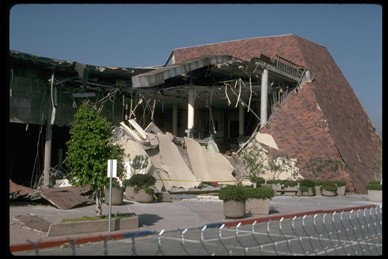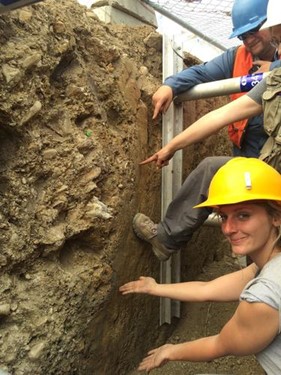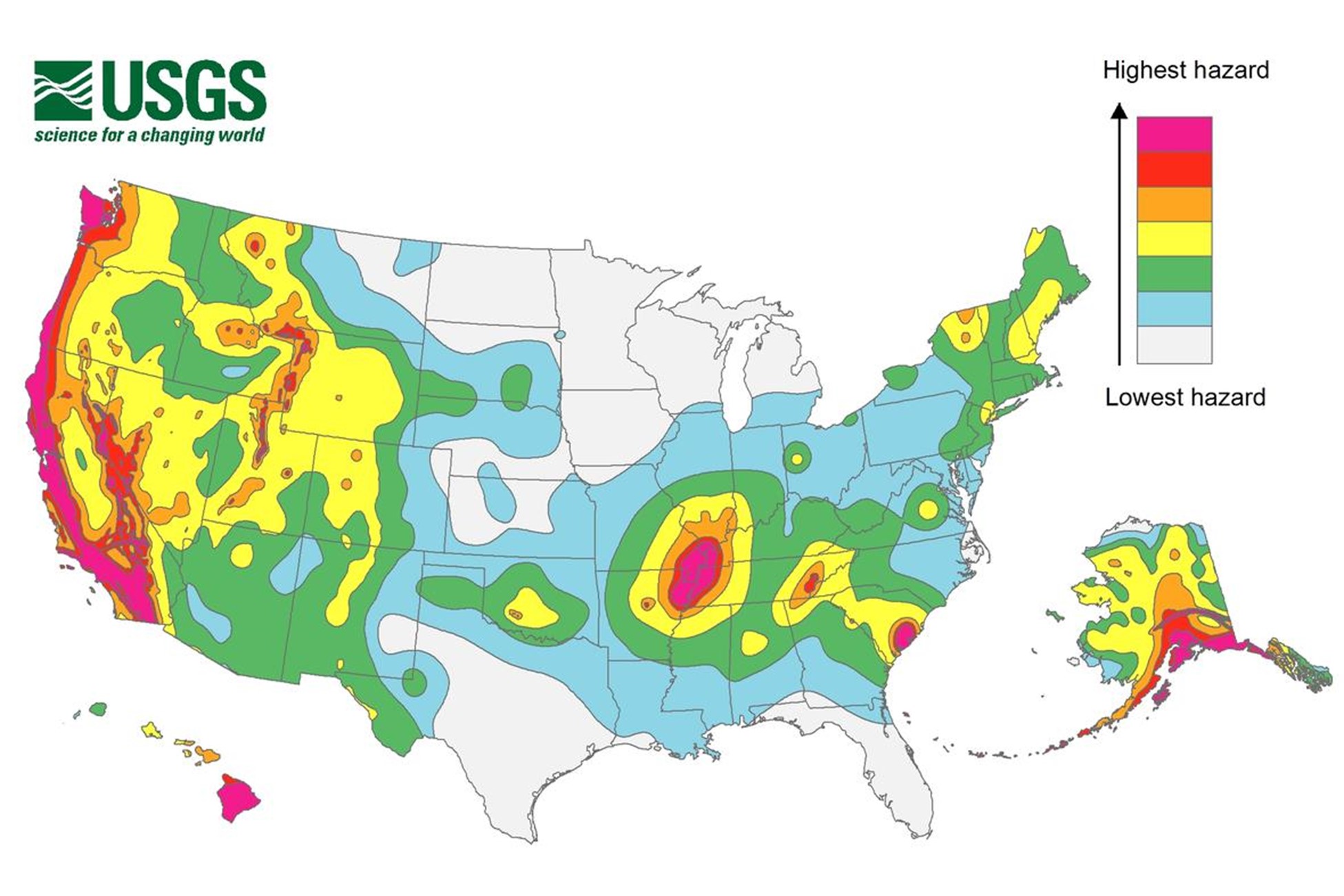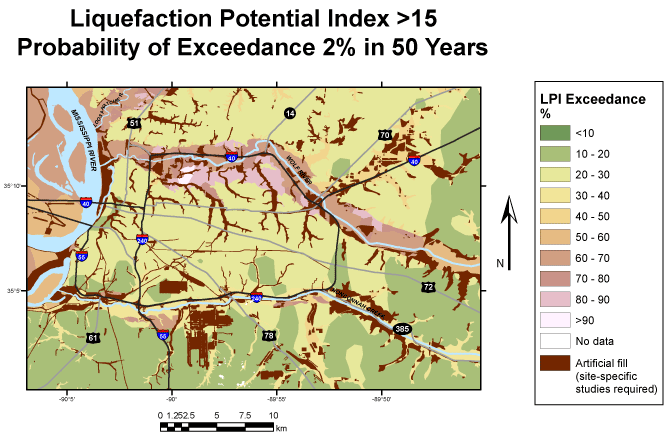
Damage from January 17, 1994 Northridge earthquake (USGS, public domain)
One of the most important functions that an Applied Geologist can undertake is to study and assess the risk of human injury and property damage posed by potential geologic hazards. This allows the geologist to make recommendations to mitigate those hazards, thereby fulfilling a critically important societal need.
What is a geologic hazard?
A geologic hazard exists when life and/or property are threatened by geologic or hydrologic conditions. Hazard is different from risk as the hazard is uniform yet the risk depends on the probability or statistical potential that such a hazard will actually lead to loss of life or property. Potential geologic hazards are numerous. Most people are aware of the hazardous nature of earthquakes, landslides and volcanic activity, but there are many other potential risks posed by geologic processes such as erosion, ground subsidence, thermal springs, soil instability, radon gas and more.
How Are Geologic Hazards Assessed?

Logging a faulty trench to determine level of activity
(Credit: David Schwartz, USGS. Public domain.)
Geologic hazards are typically evaluated by professional engineering geologists educated and trained in the interpretation of landforms and earth processes, the interaction of ground and structures, and in geologic hazard mitigation.
These geologists will typically conduct a geologic hazards assessment (GHA), which develops a summary report describing any potentially dangerous geologic issues present at a given site. GHAs are often required by regulatory entities for use in planning new developments when the proposed construction is located in a fault zone, landslide area, floodplain, coastal area, on ground identified as unstable or hazardous, or when a site inspection reveals that more safety review is needed.
The engineering geologist will then characterize the hazards and risk and usually provide recommendations on how the project designers (engineers and architects) can mitigate the impact of geologic hazards through proper siting (avoidance), engineering and design.
Predicting Seismic Hazards
Some of the most dangerous and destructive geologic forces impacting life and property are earthquakes. In the U.S., earthquakes cause estimated losses of several billions of dollars annually (Source: USGS). To mitigate these losses as much as possible, it is imperative to evaluate and assess the probability of occurrence of earthquake hazards across the country.
While earthquake science has not yet evolved to the point of predicting earthquake locations and magnitude, special consideration is given to mapping fault lines or sources and predicting the likelihood of seismic activity near any given location. To this end, the U.S. Geological Survey (USGS) has created a National Seismic Hazard Map as well as more detailed local maps, showing how much potential risk there is due to the likelihood and intensity of ground-shaking events throughout the country.

2014 USGS National Seismic Hazard Map, displaying intensity of potential ground shaking from an earthquake in 50 years (USGS, Public domain.)
The seismic maps synthesize the accumulated knowledge around epicenters, seismic activity (exceedance of ground motions) and fault lines or source to estimate potential earthquake activity and are updated regularly with new information. This mapping project also includes a database of Quaternary faults and digital maps of those faults for the U.S. and its territories.
High-Density Areas and Risk Assessment
Of course, earthquakes or any other type of geologic activity aren’t going to cause much of a problem (low risk) if there are no people or structures near the area of activity. So special attention has to be given to the areas where these events are likely to cause the most damage, i.e., high population centers.
Accordingly, the USGS gives extra attention and more detailed study to certain areas of the country, like the Pacific Northwest, large population centers in the Central and Eastern US such as Memphis, St. Louis, Boston, Charleston, and Washington D.C., urban centers in the Intermountain West such as Salt Lake City and the Reno-Carson City urban corridor in Nevada, and Puerto Rico.

Map showing liquefaction hazard in Memphis, Tennessee, for next 50 years. (USGS Public domain.)
For an Applied Geologist consulting on the siting, design and construction of buildings and development projects, it is imperative to have a thorough understanding of the potential for geologic hazards, particularly seismic events, and the best engineering practices to mitigate the negative impacts as much as possible. Society and public safety depend on Applied Geologists to fulfill this critically important function.
